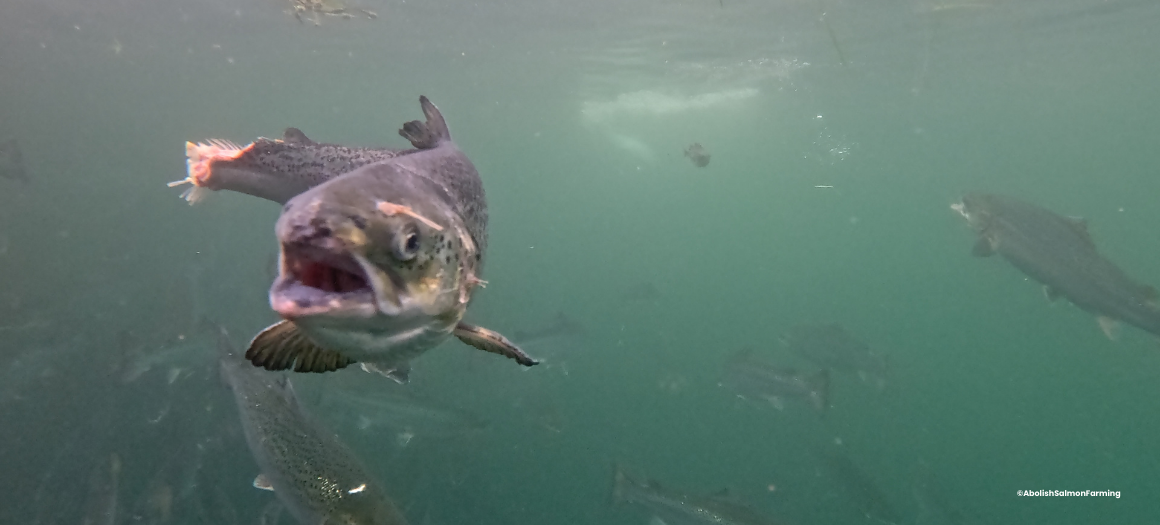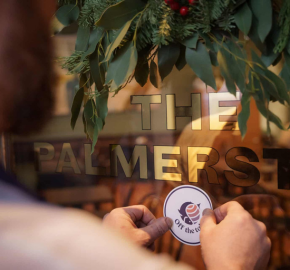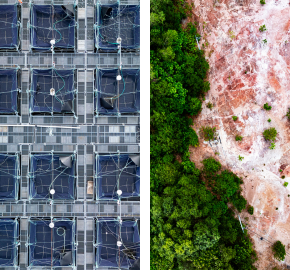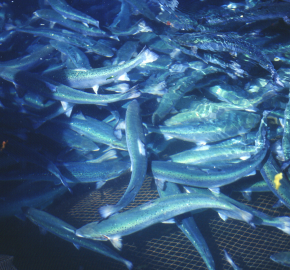Salmon farms must count sea lice on more fish to ensure accuracy of average sea lice counts

A NEW peer-reviewed paper, commissioned by WildFish and Inside Scottish Salmon Feedlots, has found that salmon farming companies must count sea lice on more fish, to ensure that the average sea lice counts are accurate.
The paper, How accurate is your average? Considering error when counting sea lice on open-pen salmon farms, published in volume 593 of Aquaculture Journal, models sea lice averages using sampling statistic theory.
GO TO THE PAPER
The paper challenges common assumptions around current counting standards and distributional models and provides an ecologically grounded framework for understanding the accuracy of a sampled pen average.
It also quantifies how many fish should be sampled to ensure that the sample average is a better representation of the true sea lice average, as well as suggesting ways that the surface area of fish can be taken into account to advance welfare standards in salmon farming.
Rachel Mulrenan, Scotland Director at WildFish, said: “The findings of this paper cast serious doubt over the sea lice counts being used by the Scottish Government and its agencies in determining how well salmon farms are managing sea lice levels, both from a welfare perspective and the perspective of protecting wild fish populations. This has potentially serious implications for identifying cases where farms are breaching the regulatory limits”.
Jed Stephens, corresponding author for the paper, said: “Take, for example, a farm reporting an average of 2.15 sea lice per fish in a particular pen. If only five fish are counted to calculate this average, in reality the true average could be as high as 3.9 sea lice per fish – almost double the sampled average.
“Similarly, if a farm is reporting an average of 1.875 sea lice per fish in a pen, once you take into account the margin of error in only counting five fish, the true average could be as high as 2.905 sea lice per fish – above the level at which enforcement action is triggered.”
Sea lice (Lepeophtheirus salmonis) are an endemic issue in open-net salmon farming, both within Scotland and globally. A type of marine parasite, sea lice proliferate on salmon farms due to the large number of fish present in each cage. [1] They present a risk both to the welfare of the farmed fish, and the survival of migrating endangered wild Atlantic salmon.
Under the Fish Farming Businesses (Reporting)(Order) 2020, salmon farming companies are currently required to report a weekly average sea lice figure to Scottish ministers, in arrears. However, these reported counts are not independently verified. Furthermore, almost a fifth (18.4%) of declared counts have been supplied as “no count” since the Order’s implementation in April 2021.
The topic of accuracy in sea lice reporting has been one of the topics arising from the Scottish Parliament’s Rural Affairs and Islands committee’s current follow up inquiry into salmon farming, with the head of the Fish Health Inspectorate acknowledging in June that the current counting requirement is “the minimum requirement to achieve a meaningful count.” [2]
A Freedom of Information request in 2021 revealed that SEPA does not believe the current counting methodology produces data that can be used “for scientific purposes”.
Rachel Mulrenan, added: “There are two major problems with how sea lice counts are currently being carried out for reporting purposes – the number of fish, and the lack of a standardised sampling protocol. There is also the additional issue of self-reported counts not being independently verified.
This paper represents a significant breakthrough in determining what number of fish need to be included in sea lice counting, for the submitted counts to be statistically reliable.
It finds that ultimately automated counting is necessary to ensure accuracy, but in the short term, increasing the count from 5 fish per pen to 15 fish per pen would cut the margin of error by half in almost all cases.”
Supporting information
Alexes Mes, Jed Stephens, Matthew Palmer, Rachel Mulrenan, Corin Smith, How accurate is your average? Considering error when counting sea lice on open-pen salmon farms, Aquaculture, Volume 593 (2024).
Case studies
When counting just 5 fish in a pen, a sampled average of 1.15 sea lice per fish could have a true average as high as 2, if the sea lice are highly dispersed [3] (i.e. concentrated on some fish, but not all fish), and if less dispersed, a sampled average around 1.00 [4] could suggest a true average as high as 2.
For a farm average determined by counting five fish from five pens (for a total of 25 counts), a sampled average of between 1.5 and 1.65 [5] could actually have a true average of 2.0. Further calculations of farm averages do not typically take into account spatial correlations which the paper shows can lead to the true average being even higher.
- A typical salmon farm cage will contain between 200,000 and 2,000,000 farmed salmon
- https://www.parliament.scot/api/sitecore/CustomMedia/OfficialReport?meetingId=15934
- Sea lice counts are modelled with a negative binominal distribution, SU2 = 4, n=5.
- If modelling sea lice counts with a negative binominal, with true mean = 2, SU2 = 2.8, then 1.05 is the lower bound for the sample mean, if using a Poisson distribution with true mean = 2, SU2 = 2, then 0.95 is the lower bound for the sample mean.
- If the sea lice counts follow the Poisson distribution with true mean =2, SU2 = 2, n=25, then lower bound for sample mean is 1.5. If the sea lice counts follow a negative binomial distribution with true mean =2, SU2 = 2, n=25, and a range of SU2 = 4.9 to 2.8, the lower bound for the sample mean is between 1.55 and 1.65.



